Directional Derivative and Gradient Vector
1/20
There's no tags or description
Looks like no tags are added yet.
Name | Mastery | Learn | Test | Matching | Spaced |
|---|
No study sessions yet.
21 Terms
fx and fy (the x and y are subscripts) are
the rates of change of f(x, y) wrt x and y respectively
tells us how the fn is changing if you move in a dir PARALLEL to the x-axis and y-axis respectively
directional derivative
gives us info on the rate of change in a dir NOT || to the two axes (not fx or fy)
ex: <1/2, 1/2> being a unit vector/direction for the derivative
let u = <a, b> be a unit vector specifiying the DIRECTION of the rate of change of f(x,y), the formula (from first principles of the derivative) of the directional derivative is:

if u = <1,0> = i (a = 1, b = 0) (which is the universal horizontal unit vector), the formula for the directional derivative is:
(the deriv wrt x)

if u = <0,1> = i (a = 0, b = 1) (which is the universal vertical unit vector), the formula for the directional derivative is:

final formula for directional derivative
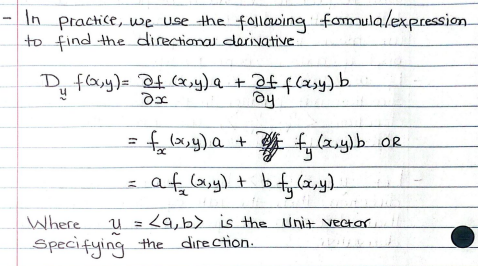

then u (the unit vec) can be written as u = <cosQ, sinQ>
the angle must be with the POSITIVE X-AXIS
see image for new formula

finding the unit vec b/w two points
points: P and Q
PQ = Q - P (typical cartesian subtraction)
|PQ| = dist between P and Q = sqrt(x², y²) where <x, y> = PQ
unit vec = PQ/|PQ| = <x, y>/sqrt(x², y²)
directional deriv expression
expression incorporates the DOT PRODUCT
dot prod of gradient vector and unit vector (MUST BE UNIT VECTOR, if it isn’t a unit vec, convert to unit vector by dividing by magnitude)
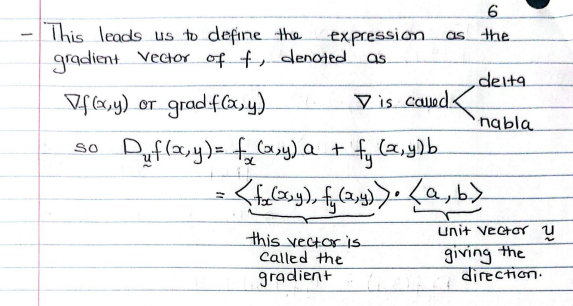
gradient vector final formula
yields a VECTOR as the final answer
i and j are to denote (1,0) and (0,1) respectively and should not have other nums subbed in

directional deriv w 3 vars

gradient vector w three vars

maximizing directional deriv
suppose we have a fn w 2 or 3 vars
and we consider ALL dir derivs of f at a given pt
which give the rates of change of f in all possible dirs
the question is: WHICH DIR GIVES US THE FASTEST RATE OF CHANGE and WHAT IS THE MAX RATE OF CHANGE
how to det the dir that gives us the max rate of change at a given pt
theta = angle between gradient vec and unit vec
max value of directional deriv occurs when theta = 0 (so cosQ = 1) therefore when the grad vec is in the same DIRECTION as the unit vec
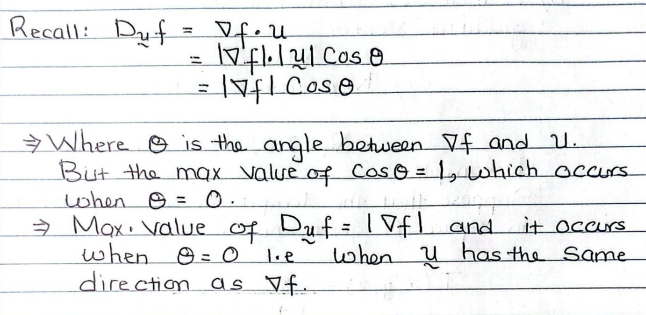
multivariable chain rule (where z = f(x,y) and x = x(t) and y = y(t))
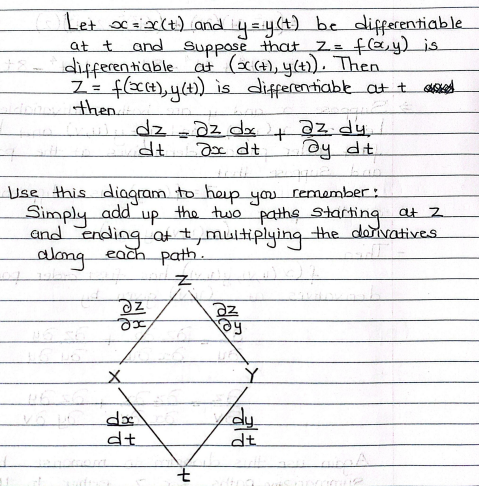
multivariable chain rule (where z = f(x,y) and x = x(u,v) and y = y(u,v))
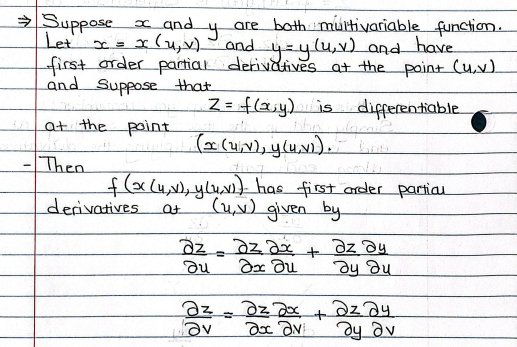
multivariable chain rule (where z = f(x,y) and x = x(u,v) and y = y(u,v)) DIAGRAM
implicit differentiation
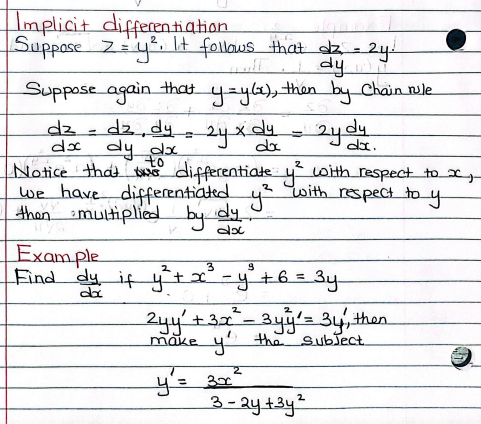
alternative method for implicit differentiation involving partial derivs (Fx, Fy)
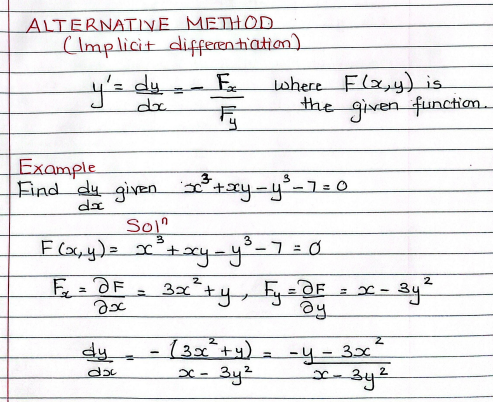
gradient vector (in simple terms)
the vector made of <value of the partial deriv wrt x at the given pt, value of the partial deriv wrt y at the given pt>
image gives you the gradient vec in the i + j format where i reps <1,0> (unit vec parallel to x-axis) and j reps <0,1> (unit vec || to y-axis)
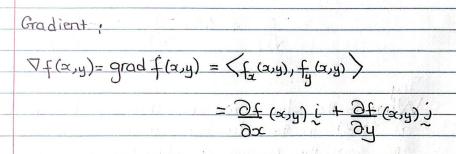
to calc max rate of change
calc the magnitude of the gradient vec